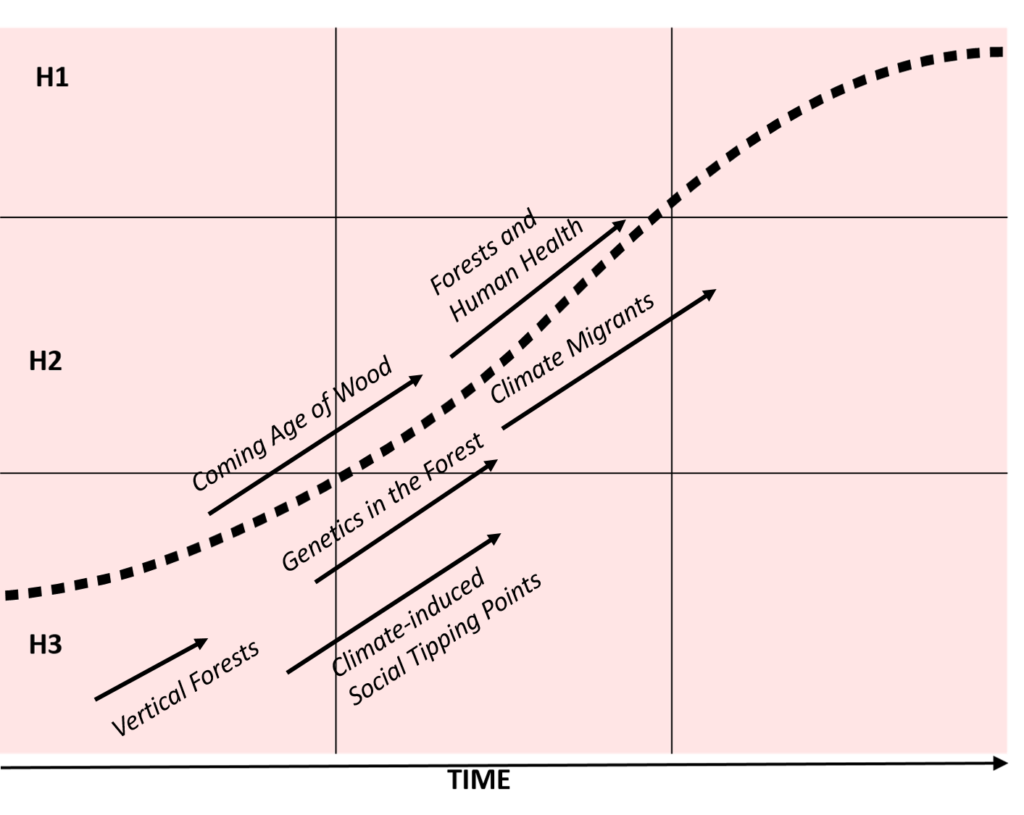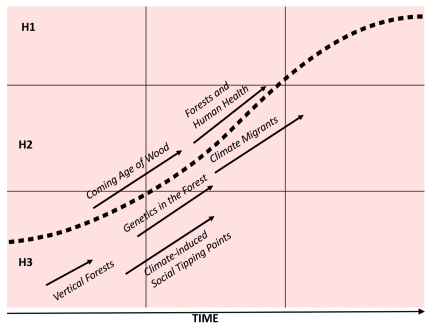We’ve talked at a high level about no surprises, wildcard insurance policies, indicator bingo, and even a curse! The basic idea is that change is a lot slower than we think. We realize this once we do regular horizon scanning. And if we really want to get our futures game on, we add in a monitoring capability to our scanning. At Houston Foresight, we did a pilot project on “Monitoring Emerging Issues (article)” with our good friends at the US Forest Service and wrote it up for World Futures Review. It was a big job. The team was Andy Hines, Bes Baldwin, Dave Bengston, Jason Crabtree, Keri Christensen, Nina Frankowski, Laura Schlehuber, Lynne Westphal, and Lena Young. 
The figure is an approximation of the team’s view of how the six emerging issues have “moved” over the last five years since the horizon scanning system that originally identified them was set up. [Note: we’re still wrestling with the best way to visually depict the movement along the horizons].
The gist is this. Futurists have long advocated for monitoring the future on an ongoing basis or for tracking the findings of project work in practice. But clients historically weren’t all that interested — translation, they wouldn’t pay for it. We think that is changing. So we sought to provide some practical guidance is available on how to set up a monitoring capability that is easy, cheap, and useful. So we piloted one and wrote up what we learned. In short, yes we can set up practical monitoring capability to track the progress of emerging issues.
But there was so much more. This article is insanely dense. We did a forensic analysis, and had a neat section on how we might sort different types of sources along the three horizons. Plenty of fun for we foresight geeks – and maybe the normies as well. – Andy Hines

Leave a Reply